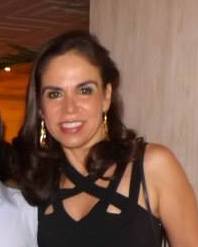Something old, something new, something borrowed, and something cool to use with music.
Music and teaching go back a long way in my career. In the beginning there were the Beatles, the Carpenters, Carly Simon, The Police, and any other band that my students happened to enjoy. We have all experienced the incredible mood-altering power of music and we’ve seen it melt away a bad mood in our classes. Not only does music help set the right tone for a class but it also relieves stress and helps students concentrate. But one question I often ask myself is how we can go beyond the old fill-in-the- blanks tasks for music.
Good ideas come from everywhere; teachers seek these ideas everywhere: a bus ride, a store sign, and a recipe book can be great sources of ideas and innovation in the classroom. In his blog post entitled “How do you get your ideas?” English author Neil Gaiman says:
Often ideas come from two things coming together that haven’t come together before. (‘If a person bitten by a werewolf turns into a wolf what would happen if a goldfish was bitten by a werewolf? What would happen if a chair was bitten by a werewolf?’)
https://www.neilgaiman.com/p/Cool_Stuff/Essays/Essays_By_Neil/Where_do_you_get_your_ideas%3F
Because language teachers don’t usually teach a single, isolated subject, they keep an open mind to all sorts of subjects and ideas. That’s why things come together so easily. Having taught English to people from all walks of life ranging from homemakers, CEOs, and doctors to artists, I can easily put things together and rearrange them if necessary to adjust them to my students’ needs. The conversations I have had with my students have helped me shape my tastes and styles. I’ve also read and talked with other teachers a lot. So, where do my ideas come from? I don’t really know. They may be other people’s ideas that look brand new in my teaching in a given situation. They may be a collage of things I’ve done or read before. They might be something I heard from a fellow teacher once, so you might have seen variations before. Let me know if you have!
So, here are a few cool, simple things we can do with songs in our classes that require very little preparation but help learners use a variety of skills to achieve the aims. WARNING: Be ready for the unexpected!
ACTIVITY 1:
The idea for this brilliant activity comes from “The Sound of Music,” a 2012 ABCI Conference workshop given by Alexandre Augusto Benincasa and Karina Tejeda, both from Piracicaba, Brazil. It combines body movement, collaborative work, and listening skills.
The idea behind it is pretty simple and it can be used with any age group:
1) Pick a song and find pictures that illustrate it. The pictures could represent concrete objects and concrete or abstract ideas in the lyrics (car, barber, shop, love, fear);
2) Make sets of pictures to use with groups of 4-6 students;
3) Divide the class into groups and place the photos on the floor. The students discuss what the pictures represent or say the names of the things (for lower levels);
4) They listen to the song and pick up the picture when they hear the word/idea. They need to do it fast because there’s only one picture for each word/idea.
5) When the song has finished, create a brand new story using the pictures they have in their hands. (My variation: retell the song lyrics)
6) Expose the students to the lyrics and play the song again. Ask them to sing along and when they hear their word or idea they should stand up and sing;
7) Follow-up: Ask them to write the lyrics for the song or write a story using the words and ideas.
I did this activity with my elementary level 12-year-olds and the song I chose was Penny Lane. I’d just come back from the IATEFL in Liverpool and they were curious about the Beatles and their songs, so I took the opportunity to do this fun activity.
ACTIVITY 2:
I chose Eleanor Rigby for this activity. My teenage students listened to it, discussed the lyrics and the vocabulary. But this was not the point of the activity: the ultimate goal was to have them add a description of a lonely person to the song. We then voted for the saddest and the funniest ones. We did a karaoke version and added the students’ lyrics. It was hilarious!
ACTIVITY 3:
In this activity, I pick a piece of the lyrics of a song and translate it into the students’ native language. In my case, it’s Brazilian Portuguese and many Brazilian websites feature translated lyrics. I show it to my students and ask them to write an English version for it. They compare their versions and then they see the original version. TIP: Avoid well-know songs because many students know the lyrics by heart. This task exposes students to idioms and collocations and it can be used with intermediate levels and up.
I believe good ideas are worth spreading and the ideas I like best are those that simply seem to come out of the blue and fit in perfectly with your class in the here-and-now of things. So, I hope to inspire you to reuse, repurpose these ideas, and come up with your own to create magical moments with your students.







